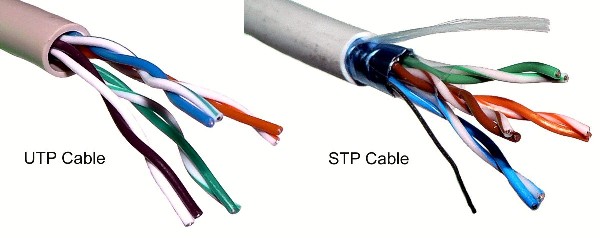As we all know, the advantages and disadvantages of shielded and unshielded twisted-pair cable are under debate for a long time. Advocates of STP cable, which includes screened twisted-pair and foil twisted-pair cables, claim that it is superior to UTP cable. Shielded versus unshielded twisted-pair cable, which is the winner? This post will give you the answer.
STP and UTP cable differ in design and manufacture. But their purpose should be the same--to provide reliable connectivity of electronic equipment. In theory, both types of cable should do this equally well. The true test comes when you look at how each of these cable types performs that task within its respective end-to-end system.

Shielded twisted-pair cable encases the signal-carrying wires in a conducting shield as a means of reducing the potential for electromagnetic interference. How effective the shielding is depends on the material used for the shield--its thickness and frequency, the type of electromagnetic noise field, the distance from the noise source to the shield, any shield discontinuity and the grounding practices. Also, crosstalk and signal noise can increase if the effects of the shield are not compensated for.
Some STP cables, for example, use a thick braided shield that makes a cable heavier, thicker and more difficult to install than its UTP counterpart. Other STP cables use only a thin outer foil shield. These cables, known as screened twisted-pair cables or foil twisted-pair cables, are thinner and less expensive than braided STP cable; however, they are not any easier to install. Unless the minimum bend radius and maximum pulling tension are rigidly observed when these cables are installed, the shield can be torn.
Unshielded twisted-pair cable does not rely on physical shielding to block interference. It relies instead on balancing and filtering techniques using media filters, baluns or both. Noise is induced equally on two conductors and is canceled out at the receiver. With properly designed, manufactured and installed UTP cable (like CAT6 UTP cable), the network is easier to maintain than one in an STP cable plant, with its shielding continuity and grounding issues.
UTP cable has evolved during the years, and different types are available for different needs. Basic telephone cable, also known as direct-inside wire, is still available. Improvements over the years--variations in the twists or in individual wire sheaths or overall cable jackets--have led to the development of Cat3 cable that is compliant with the Electronic Industries Association/ Telecommunications Industry Association-568 standard for transmission rates up to 16 megahertz. Cat 4 UTP cable is specified for signal bandwidths to 20 MHz, and Cat5e UTP cable for specifications to 100 MHz--and possibly higher.
Since UTP cable is lightweight, thin and flexible, as well as versatile, reliable and inexpensive, millions of nodes have been, and continue to be, wired with this cabling medium. This is especially true for high-data-rate applications. For best performance, this UTP cable should be used as part of a well-engineered structured cabling system.
If STP cable is combined with improperly shielded connectors, connecting hardware or outlets, or if the foil shield itself is damaged, overall signal quality will be degraded. This, in turn, can result in degraded emission and immunity performance. Therefore, for a shielded cabling system to totally reduce interference, every component within that system must be fully and seamlessly shielded, as well as properly installed and maintained.
An STP cabling system also requires good grounding and earthing practices because of the presence of the shield. An improperly grounded system can be a primary source of emissions and interference. Whether this ground is at one end or both ends of the cable run depends on the frequency at which a given application is running. For high-frequency signals, an STP cabling system must be grounded, at minimum, at both ends of the cable run, and it must be continuous. A shield grounded at only one end is not effective against magnetic-field interference.
The length of the ground conductor itself can also cause problems. If it is too long, it no longer acts as a ground. Therefore, because specific grounding requirements depend on the application, a general grounding policy that ensures the best results for an STP cabling system is not possible.
UTP cabling doesn’t have this problem. While an STP cabling system is dependent on such factors as physical continuity of the cable shield or installation with adequately shielded and grounded components, a UTP cabling system inherently has fewer potential trouble spots and is much easier to install.









